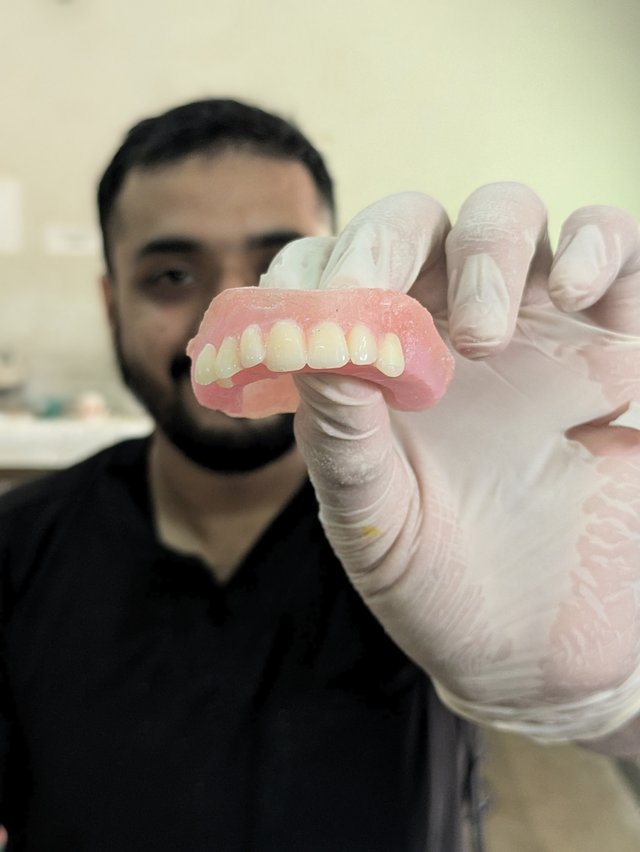I was assigned a patient with Parkinson's

Working in the Prosthodontics department can be incredibly rewarding, not in terms of money, but in a much deeper, more meaningful way. This field offers the chance to make a genuine impact on the lives of elderly patients, many of whom have surpassed the age of 60. Some of these individuals struggle with limited mobility, some can barely speak, and others rely entirely on their children or caretakers. There are even those who, sadly, have no one to accompany them to the hospital.
Recently, I encountered a patient who left a lasting impression on me. She was 68 years old, living with Parkinson's disease, unable to speak or move on her own, and bound to a wheelchair. Fortunately, she was accompanied by her son, who was truly devoted to her well-being. He ensured that she never missed an appointment and was by her side at all times, showing a level of care and dedication that’s rare to see in today’s generation

I knew I had to minimize her waiting time as much as possible. Working in the Prosthodontics department of a government hospital means that each patient typically needs to come in at least 4-5 times for different procedures. The first visit is usually for taking an impression of the teeth. An impression involves measuring the teeth using an impression material, commonly made from alginate.

The next step is to disinfect the impression that you have taken and then pour dental stone on it to fabricate a model of both the maxillary (upper) and the mandibular (lower) arches. The models are made so that you can build a custom tray on it, set teeth, apply wax etc. basically a correct model is the most important thing and for a correct model you need a correct impression and for a correct impression you need to have a perfect diagnosis.

After the model was fabricated, I created a custom tray on it that will be fitted in the patient's mouth. The custom tray is made by mixing polymer and monomer. On this custom tray, a wax rim is formed, which serves as the base for setting up the teeth. The patient is then called back for a "jaw record" session, where we check if the tray fits properly in the patient's mouth


It was difficult to see her coming into the OPD repeatedly in a wheelchair, but we had no choice if we wanted to provide her with the perfect denture. To achieve this, we needed to record every detail in her mouth accurately. Once the jaw record was complete, the teeth were set up on the tray, and I carefully trimmed each of the 32 teeth individually to ensure the patient would be free of any discomfort.

The patient is then called in once again for a "trial" to check if the occlusion is properly aligned, if any teeth need additional trimming, and if they are positioned correctly. Once the trial is complete, the tray is sent for a procedure known as flasking, which takes overnight. During this process, all the wax is removed from the tray, and the teeth are secured in place. Finally, the patient is called in for the last step, known as "insertion."

I think I managed to change a life. All the emotions and the tears and the fulfilment after the insertion was done is something I'll share in the next post as I think it deserves it's own attention
Regards,
Dr Huzaifa Naveed